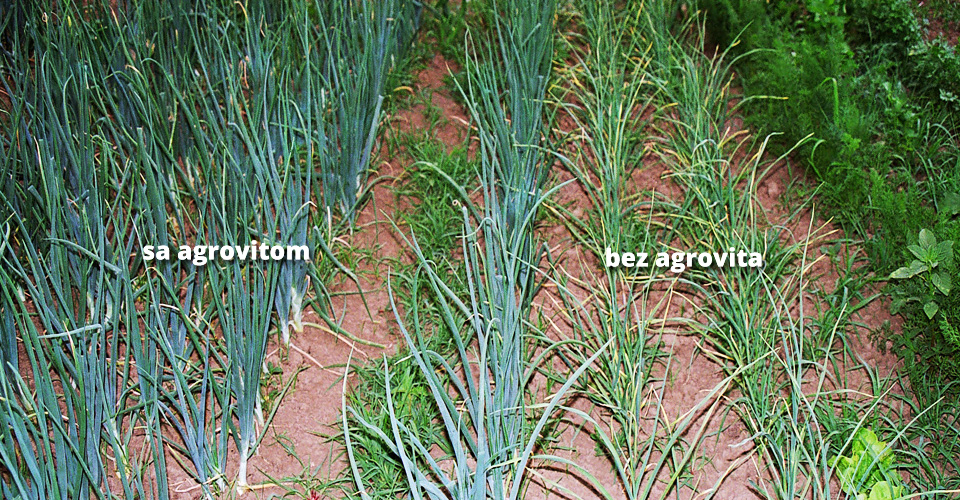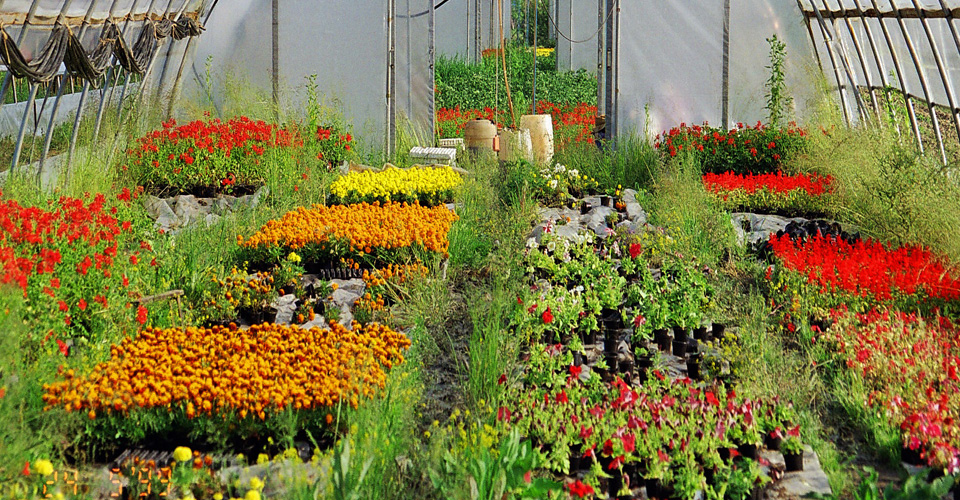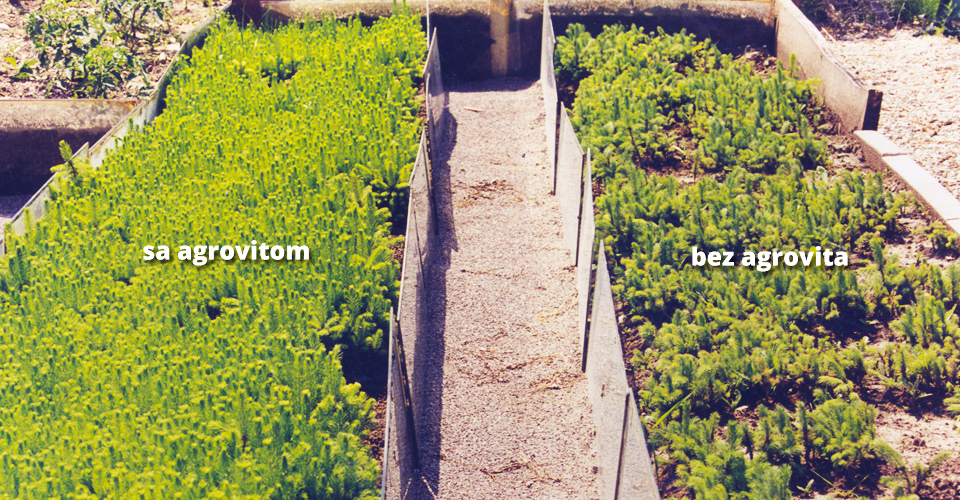AGROVIT is applied to the soil every fourth growing season alongside a significant reduction in conventional fertiliser use and a substantial decrease in typical repellents.

About
Agrovit
AGROVIT was first researched and applied to various cultures under various climatic conditions in 1989.
AGROVIT is an easily applicable natural fertiliser, plant growth and development stimulator, and soil enricher. Applied to the soil, it ensures long-term high yield and plant quality while protecting the natural characteristics of the surrounding environment.
Entirely neutral for humans, animals, and plants. It is used across multiple growing seasons, significantly improving soil fertility and rejuvenating its natural characteristics.
AGROVIT, a water-insoluble product with highly effective bioactive substances derived from the biological decomposition of plant material and the physical activation of minerals, significantly affects crops' growth, development, condition, and quality.
AGROVIT's high efficiency in the rhizosphere ensures that root and soil microorganisms enjoy exceptional passive nutrient activation and the biosynthesis of plant growth factors.
In addition to efficiently stimulating the action of microflora and microfauna in the root system, AGROVIT improves the structural characteristics of the soil, increasing its capacity to absorb and retain moisture and gases by forming firm agglomerates of clay and humic acids.
In addition to its organic and bioactive components, AGROVIT contains a wide range of microelements.
AVERAGE COMPOSITION OF AGROVIT
| a pH of 10% water solution | 6,0 – 7,5 |
| Water content | 5 – 8% |
| Organic matter | 10 – 20 % |
| Nitrogen - total (N) | 1,5 – 2,2 % |
| Phosphorus (P2O5)205) | 0,2 – 0,5 % |
| Potassium (K2O)2O) | 2,5 – 4,0 % |
| Calcium (CaCO3)3) | 8,5 – 9,5 % |
| Magnesium (MgCO3)3) | 5,5 – 6,0 % |
| Iron (Fe2O3)2O3) | 2,0 – 2,5 % |
*AGROVIT is a mixture of mineral, plant, and bioactive components whose composition varies, resulting in potential variations in these values
AGROVIT binds and blocks the harmful action of environmental pollutants and aids in their biological degradation.
This means that AGROVIT reduces crop production costs by reducing the application of pesticides and fertilisers and reducing labour, as well as significantly increasing the yields of particular plant cultures and improving crop quality while increasing pest and disease resistance.
AGROVIT AGROVIT is applied to the soil twice. 70% of the necessary dose is applied at the end of the active growing season (autumn), while the remaining 30% is applied immediately before the outset of the active growing season (spring).
The procedure is repeated after another three growing seasons.
The best results are achieved with AGROVIT using the following approaches:
GENERAL APPROACH IN PLANT GROWING
Before applying AGROVIT to the soil, it is necessary to perform a comprehensive soil analysis before harvesting or planting to adjust optimal soil parameters and confirm the amount of AGROVIT necessary. Materials to correct essential soil characteristics for the growing of annual crops are applied to the soil before sowing/planting with the application of 70% of the confirmed dose of AGROVIT, while the remaining quantity of 30% is applied together with seeds or seedlings. For planting perennials, exact planting instructions are provided in writing after soil analysis. For the use of machines for planting, instructions are provided in writing after soil analysis.
GROWING VEGETABLE CROPS
For the plantation cultivation of vegetable crops, it is necessary to carry out a comprehensive substrate analysis to confirm the optimal dose of AGROVIT and other additives needed for any potential corrections to soil substrate parameters. A substrate sample is taken after the harvest (autumn) to correct basic soil parameters prior to agricultural operations and to apply the first 70% of the necessary dose of AGROVIT. The remaining amount of 30% is applied immediately before planting or sowing. The average dose of AGROVIT for vegetables is from 45-60g/m2.2.
FRUIT GROWING
AGROVIT can be applied to all perennials during planting or any plant developmental stage. In principle, when treating perennials with AGROVIT, it is necessary to perform a soil analysis, which is used to determine how much AGROVIT is needed and what approach should be taken to the application of other necessary components (organic fertiliser, soil pH correctors, etc.).
- PLANTING
- DEVELOPED PERENNIALS
For olive trees, vineyards, figs, and hops, the same approach is used as for other fruit trees; however, precise instructions for each particular case are provided in the recommendations with the soil analysis findings.
When planting seeds for nursery plants or transplanting flowers, 1kg of AGROVIT is mixed with 100kg of soil or 1L of AGROVIT per 100L of a high-quality substrate.
In horticulture, AGROVIT's long lifespan and simple application is an irreplaceable aid resulting in high production quality and the improved appearance of treated surfaces.
Instructions are provided separately for machine planting of cultures. For all additional information, don't hesitate to contact the development department.



